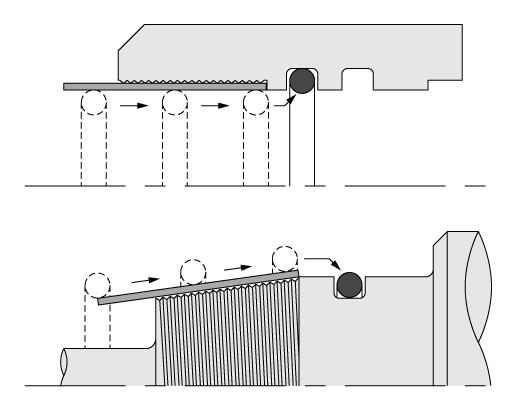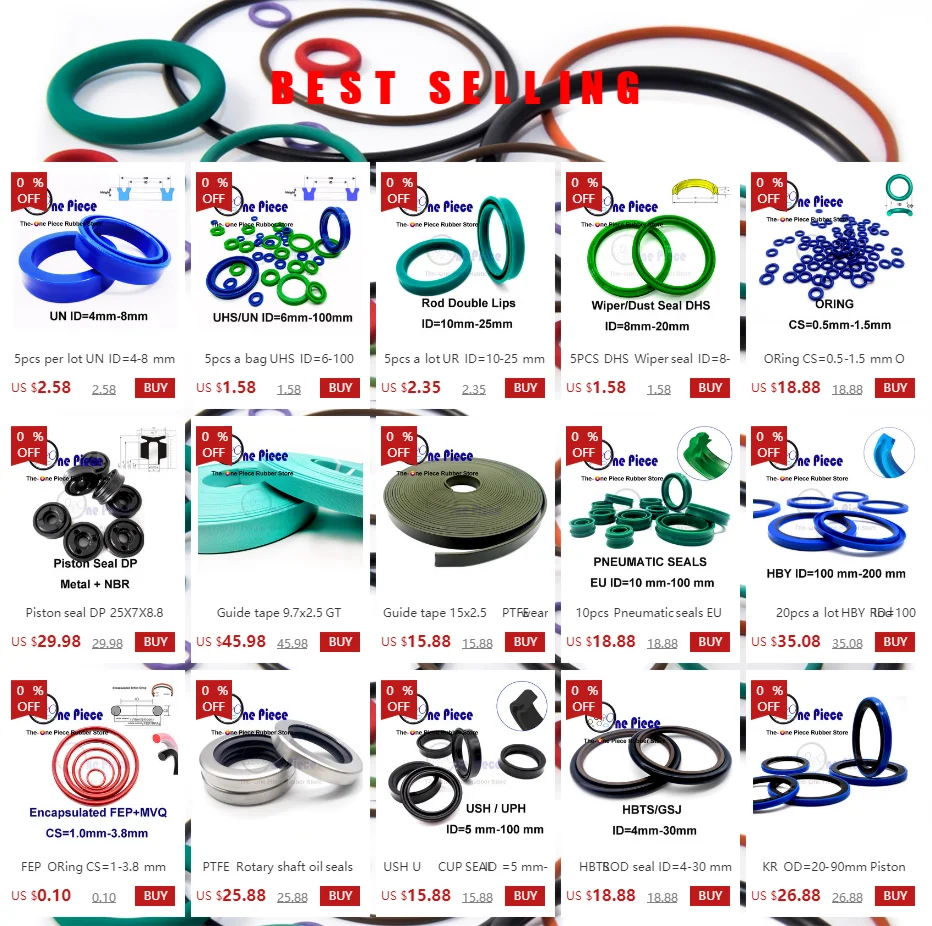

















Size: ID*CS (mm)
If you want other items, please advice theID*CSsizes and theQuantityyou need. Thanks!


What is an O-Ring?
An o-ring is a round, mechanical gasket designed to be seated in a groove and compressed during assembly between two or more parts, creating a seal at the interface.O-rings are one of the most common types of seals because they’re inexpensive, reliable and have simple mounting requirements.Since they are known as one of the most important elements of machine design, o-rings may be used in static applications, where little range of motion is required.O-rings may be used in dynamic applications, like rotating pump shafts and hydraulic cylinder positions, also.
Main Elements of an O-Ring:
A perfect fit every time…We carry thousands of o-ring sizes in our warehouse.And we’re ready to ship to you at a moment’s notice.Our o-rings are available in the full range of standard AS568 and metric sizes.Additionally, sizes are specified by the inside diameter (ID) and the cross section (CS) or thickness.Therefore, if the o-ring you need is not a standard AS568 or metric size, you’ll need either a vulcanized o-ring or a custom molded o-ring.All size options are available from Global O-Ring.(See O-ring size chart).






Material:
Material matters.Due to this, selecting an o-ring material for a specific application is dependent on many criteria, including: what’s being sealed, temperature range, pressure, dynamic or static service, desired service life, installation considerations, tolerances and many more.To learn which o-ring materials will work best in your application, review our Material Selection Guide.
Nitrile rubber (NBR) is the general term for acrylonitrile-butadiene copolymer. The ACN content can vary between 18% and 50%. While the acrylonitrile content is important, the resistance to oil and fuel is more so. Conversely, the elasticity and compression set are not as good. The NBR has good mechanical properties and good wear resistance. However, its resistance to atmospheric agents and the ozone is relatively low.
Depending on their structure and fluorine content, fluoroelastomers can vary in terms of chemical resistance and resistance to cold. This FKM-based rubber is very often used for high-temperature hydraulic and pneumatic systems, industrial valves, injection/fuel systems, motor seals and high-vacuum systems.
As an Ethylene Propylene Diene Monomer copolymer, EPDM is commonly used for hot water taps, cooling systems, brake systems, dishwashers and washing machines.
This HNBR-based elastomer is obtained through selective hydrogenation of the NBRs butadiene groups. It is commonly used for power-assisted steering and for air conditioning.
This FVMQ-based rubber is very often used for fuel systems.
The FVMQ has mechanical and physical properties that are very similar to those of VMQ. However, the FVMQ offers better resistance to fuels and mineral oils. However, resistance to hot air is not as good as that of VMQ.
This CR-based elastomer is used in the refrigeration industry and for ventilation systems. This chloroprene was the first synthetic rubber to be developed and marketed.
FFKM has the best resistance to high temperatures and an excellent chemical inertia. This FKM-based rubber is very often used for high-temperature hydraulic and pneumatic systems, industrial valves, injection/fuel systems, motor seals and high-vacuum systems.
Durometer:
Determining durometer isn’t hard.The hardness of rubber compounds is measured by the Shore A durometer;the higher the durometer, the harder the compound.In addition, softer compounds stretch easier and seal better on rough surfaces.Harder compounds offer greater abrasion resistance and resistance to extrusion.
Several essential rules must be followed before fitting the ORings:
Check that the mechanical parts (rod and bore parts) have a chamfer length that is in line with our recommendations,
Remove the flash and chamfer or round off the sharp edges and holes; cover the threaded parts,
Remove the machining shavings and all impurities and other foreign bodies. Thoroughly clean all of the mechanical parts,
Grease or oil the ORing and mechanical parts to make it easier to fit. For this purpose, ensure upstream that the lubricants are compatible with the ORing materials. Avoid greases containing solid additives (molybdenum disulfide or zinc sulfide),
If using installation tools, check that they are clean and do not have sharp edges.
Piston installation with ORings
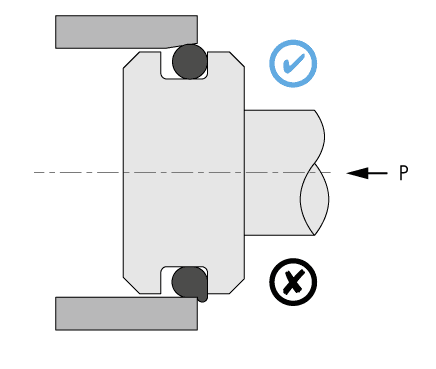
Rod installation with ORings
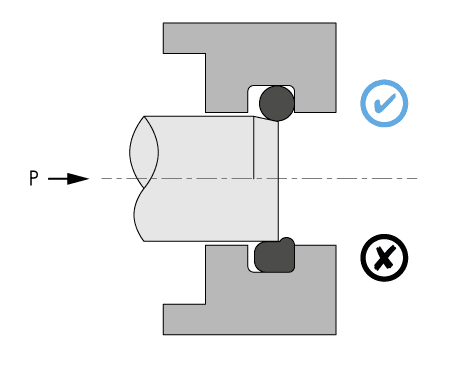
ORings installation with transverse holes
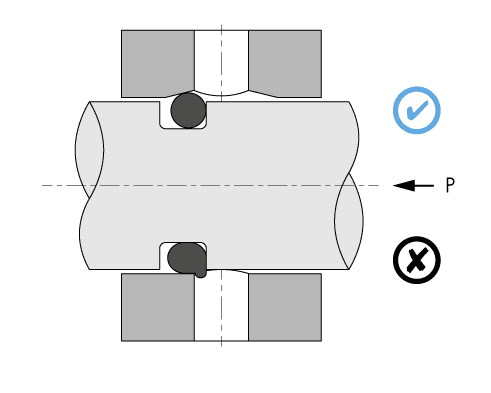
ORings installation with threaded parts
